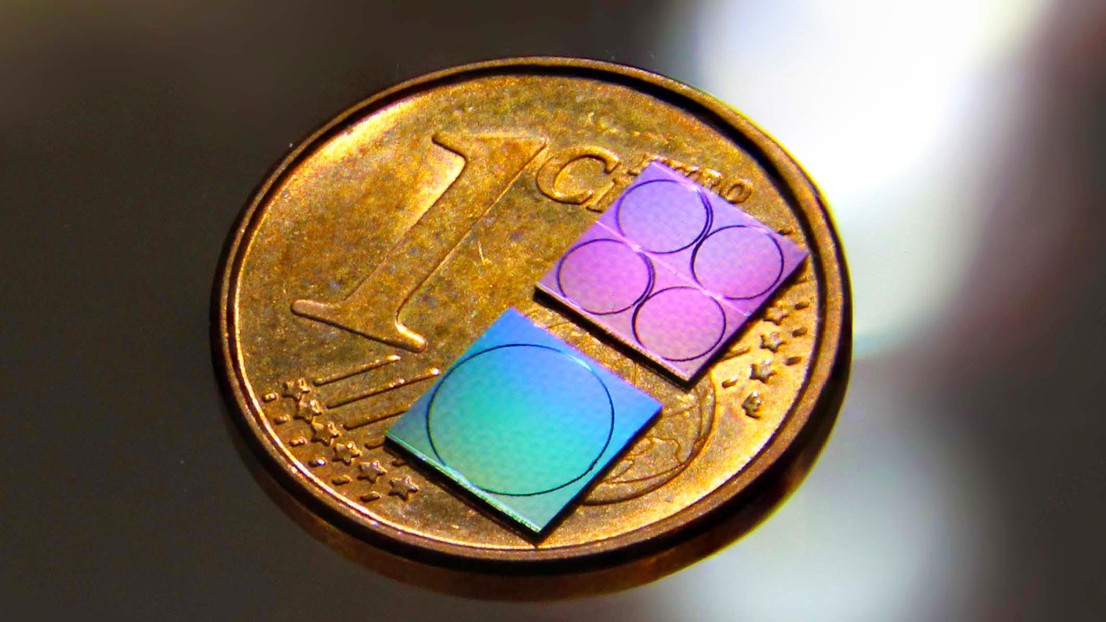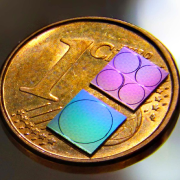Using integrated photonic chips fabricated at EPFL, scientists have demonstrated laser-based microwave generators. These microwave signals, as well as their optical carriers, could be used in radars, satellite communications and future 5G wireless networks.

In our information society, the synthesis, distribution, and processing of radio and microwave signals are ubiquitous in wireless networks, telecommunications, and radars. The current tendency is to use carriers in higher frequency bands, especially with looming bandwidth bottlenecks due to demands for e.g. 5G and the “Internet of Things”. “Microwave photonics”, a combination of microwave engineering and optoelectronics, might offer a solution.
A key building block of microwave photonics is optical frequency combs, which provide hundreds of equidistant and mutually coherent laser lines. They are ultrashort optical pulses emitted with a stable repetition rate that corresponds precisely to the frequency spacing of comb lines. The photodetection of the pulses produces a microwave carrier.
In recent years there has been significant progress on chip-scale frequency combs generated from nonlinear microresonators driven by continuous-wave lasers. These frequency combs rely on the formation of dissipative Kerr solitons, which are ultrashort coherent light pulses circulating inside optical microresonators. Because of this, these frequency combs are commonly called “soliton microcombs”.
Generating soliton microcombs needs nonlinear microresonators, and these can be directly built on-chip using CMOS nanofabrication technology. The co-integration with electronic circuitry and integrated lasers paves the path to comb miniaturization, allowing a host of applications in metrology, spectroscopy and communications.
Publishing in Nature Photonics, an EPFL research team led by Tobias J. Kippenberg has now demonstrated integrated soliton microcombs with repetition rates as low as 10 GHz. This was achieved by significantly lowering the optical losses of integrated photonic waveguides based on silicon nitride, a material already used in CMOS micro-electronic circuits, and which has also been used in the last decade to build photonic integrated circuits that guide laser light on-chip.
この情報へのアクセスはメンバーに限定されています。ログインしてください。メンバー登録は下記リンクをクリックしてください。

